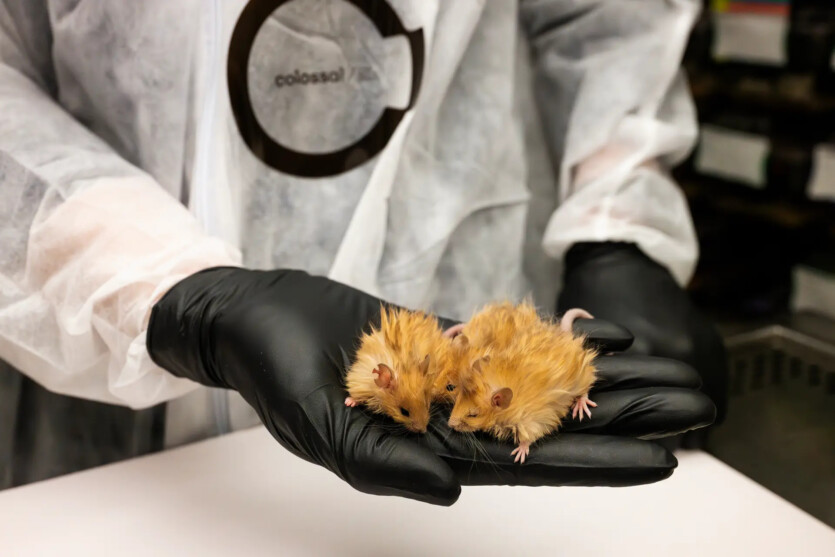
Geneticists and bioengineers at Colossal BioSciences have bred woolly mice as part of a project to revive mammoths.
The scientists managed to achieve this with the help of gene editing technology CRISPR CRISPR («clustered regularly interspaced short palindromic repeats») is a technology used by scientists and researchers to selectively modify the DNA of living organisms. This tool was adapted for use in the laboratory from natural genome editing systems found in bacteria.
CRISPR («clustered regularly interspaced short palindromic repeats») is a technology used by scientists and researchers to selectively modify the DNA of living organisms. This tool was adapted for use in the laboratory from natural genome editing systems found in bacteria.
The emergence of thick fur in mice and other genetic features they acquired made the rodents more adapted to living in cold conditions.
«The colossal woolly mouse — is a watershed moment in our mission to fight extinction. This success brings us one step closer to our goal of bringing back the woolly mammoth»,” said Colossal Biosciences co-founder and CEO Ben Lamm.
As part of the latest project, scientists from Colossal BioSciences analyzed the genomes of 62 elephants and 59 woolly mammoths that lived on Earth 1.2 and 3.5 million years ago.
The team of geneticists and bioengineers selected genes responsible for the formation of wool and other features that allow them to adapt to cold climates.
The researchers focused mainly on those genes that distinguish mammoths from Asian elephants. This allowed the experts to reduce the set to 10 genes that are crucial in determining the characteristics of the coat and characterize lipid volume, while remaining compatible with the mice’s organism.
The scientists explained that the gene editing allowed them to change the coat growth cycle in mice, making it three times longer than in other wild, field rodents. In addition, the mice developed wavy wool-like fur and curled whiskers.
According to the researchers, the breeding of woolly mice paves the way for the revival of mammoths and is also an excellent model for studying the mechanism of mammalian adaptation to existence in cold climates.
«We have pushed the boundaries of genetic engineering by coordinating multiple complex trait modifications in live animals with exceptional efficiency. This achievement demonstrates both the technical expertise of our scientists and the capabilities of our genetic engineering platform to produce predictable phenotypes», — emphasizes Michael Abrams, one of the leaders of the Colossal BioSciences team of scientists, molecular microbiologist.
Source: Colossal Biosciences

Spelling error report
The following text will be sent to our editors: